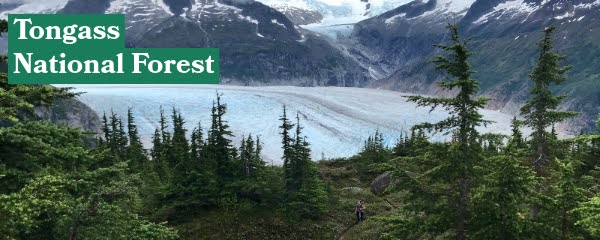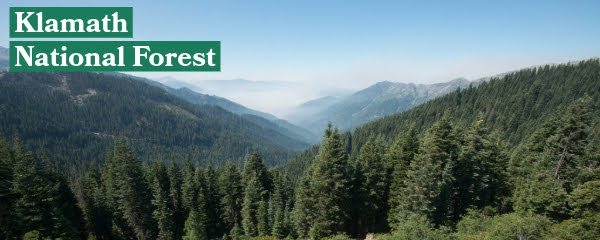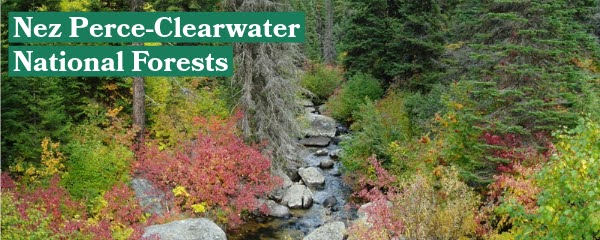

Trees are falling right now, John.
Chainsaws are ripping through trunks that have stood tall for decades. Forests are crashing down to the ground.
Our oldest trees are worth more standing, but many are on the chopping block. These logging projects in the heart of our national forests are tearing down mature and old-growth trees. Let's explore three of these threatened forests:

Last year, we led the charge to restore protections to 9 million acres of roadless areas in the Tongass National Forest. New roads can't be built to enable more widespread logging in this precious forest.
But even though large swaths of the Tongass are protected, the parts of the Tongass where roads already exist are still open to logging. And the U.S. Forest Service could allow logging to continue to cut down old-growth trees.
The Tongass National Forest is the largest national forest in the United States. It's the world's largest remaining, mostly intact temperate rainforest.
Among this wild Alaskan forest are deep fjords, glaciers and snow capped mountains. The Tongass has the highest density of brown bears in North America. Bald eagles and flying squirrels soar through the treetops. Humpback whales and sea otters swim along its coast.
Because this forest has remained mostly untouched, it boasts one of the highest concentrations of old-growth forest in our country. Its oldest trees have been left alone to thrive.
But it's precisely because of the Tongass' vast acres of old-growth trees that this forest is targeted by the logging industry. Several patches of old-growth forest in the Tongass are being sold off for timber.1

At the northern edge of California is the Klamath National Forest. It's one of the most diverse conifer forests in the world with many different species of old-growth trees. Douglas firs, sugar pines, mountain hemlock, whitebark pines, and more grow from the Klamath mountains to the dormant volcanoes south of the Cascades.2,3
Threatened northern spotted owls, pileated woodpeckers, American martens and Pacific fishers are all dependent on these old forest habitats for nesting, roosting and denning.
The South Fork logging project would log 2,455 acres of Klamath's trees, including mature and old-growth forest. The Bear Country logging project to cut down 2,000 acres of mature trees has just been approved and the threat of logging is imminent. The Bear Country project would also remove more than 900 acres of northern spotted owl habitat, further straining this threatened owl species.4

In north-central Idaho, the Nez Perce-Clearwater National Forests are a wild and historic place.
Groves of old-growth western red cedar trees grow 200 feet tall, measuring 10 feet around their trunks. The rugged landscape is home for elk, moose, black bears and mountain goats. And it's extremely colorful, especially in autumn when stunningly bright reds, oranges and yellows dot the understory along the streams.
In 1805, Lewis and Clark trekked through this forest. Adventurers still love this place, especially its three rivers with rapids for thrillseekers. The Snake River carves through Hells Canyon, which is the deepest river gorge in North America.5,6
The Forest Service plans to bulldoze 200 miles of logging roads through Nez Perce-Clearwater's old-growth forest. The proposed logging project would effectively clearcut 2,057 acres of trees.7
We can be guardians for our mature and old-growth forests.
Most of our oldest forests are unprotected from logging on the lands that the U.S. Forest Service manages. Right now, there are dozens of proposed logging projects in our oldest forests.
But all hope is not lost -- the U.S. Forest Service is considering creating first-ever protections for old-growth forests. A strong forest policy can keep our oldest trees safe and standing tall for future generations.
Our forests protect us from climate change, locking carbon out of the atmosphere. They shelter wildlife and they make our country more beautiful. Now, it's time for us to protect them.
Environment Colorado is defending our forests from logging. This summer, we're urging the U.S. Forest Service to keep commercial logging out of our oldest forests. And together, we can save our oldest trees before they become stumps.
Thank you,
Ellen Montgomery
P.S. Become a guardian for our old-growth forests by making a donation to Environment Colorado today.
1. Ellen Montgomery, "Threatened forests," Environment America, May 19, 2023.
2. "Marble Mountain Wilderness - Klamath National Forest," U.S. Forest Service, last accessed June 3, 2024.
3. "Geologic Areas - Klamath National Forest," U.S. Forest Service, last accessed June 3, 2024.
4. Ellen Montgomery, "Threatened forests," Environment America, May 19, 2023.
5. "Hells Canyon Corridor," U.S. Forest Service, last accessed May 31, 2024.
6. "About the Forest - Nez Perce-Clearwater National Forests," U.S. Forest Service, last accessed June 3, 2024.
7. Ellen Montgomery, "Threatened forests," Environment America, May 19, 2023.
Your donation will be used to support all of our campaigns to protect the environment, from saving the bees and protecting public lands, to standing up for clean water and fighting climate change. None of our work would be possible without supporters like you. Environment Colorado may transfer up to $50 per dues-paying member per year into the Environment Colorado Small Donor Committee.
Environment Colorado, Inc.
1543 Wazee St., Suite 400, Denver, CO 80202, (303) 573-3871
Member questions or requests call 1-800-401-6511.
Facebook | Twitter
If you want us to stop sending you e-mail then follow this link -- Unsubscribe